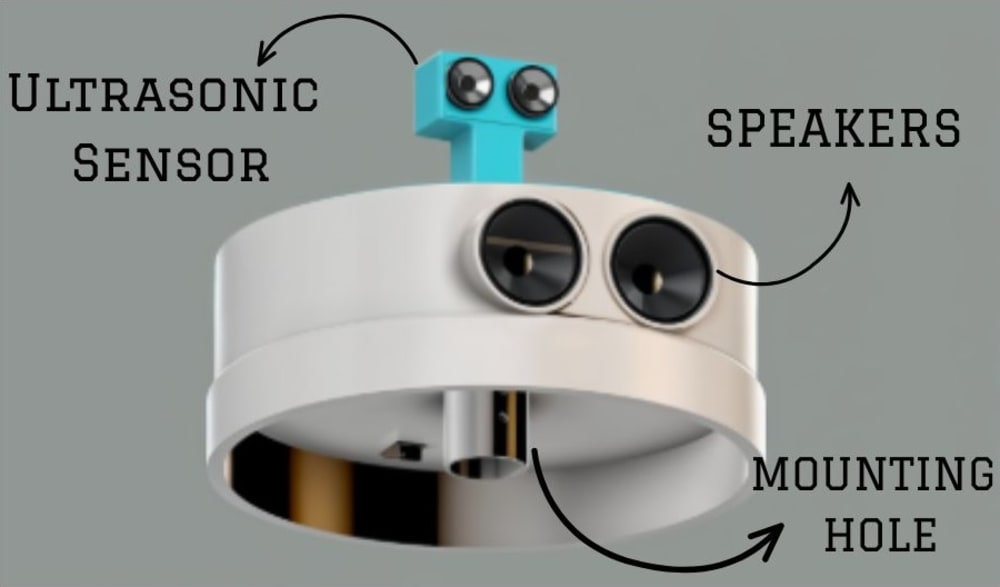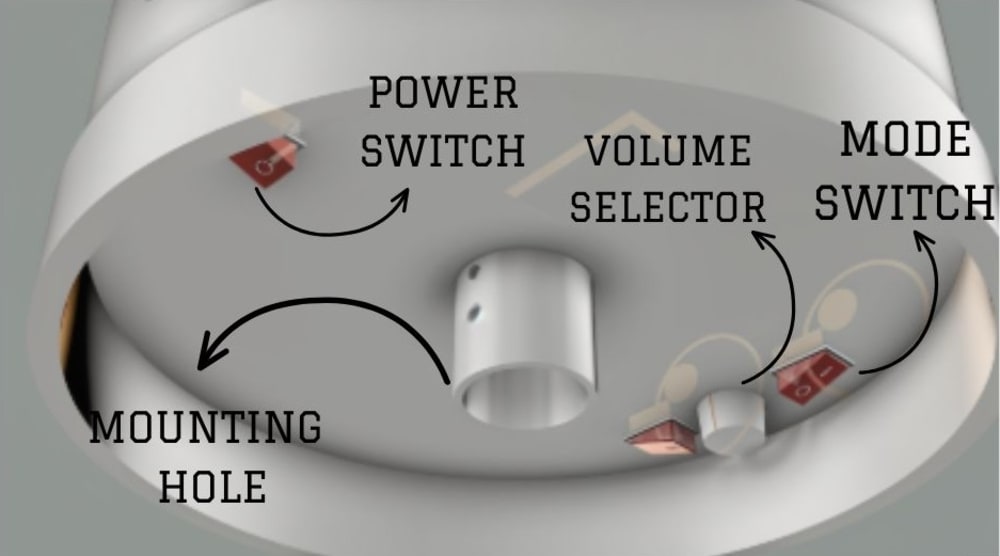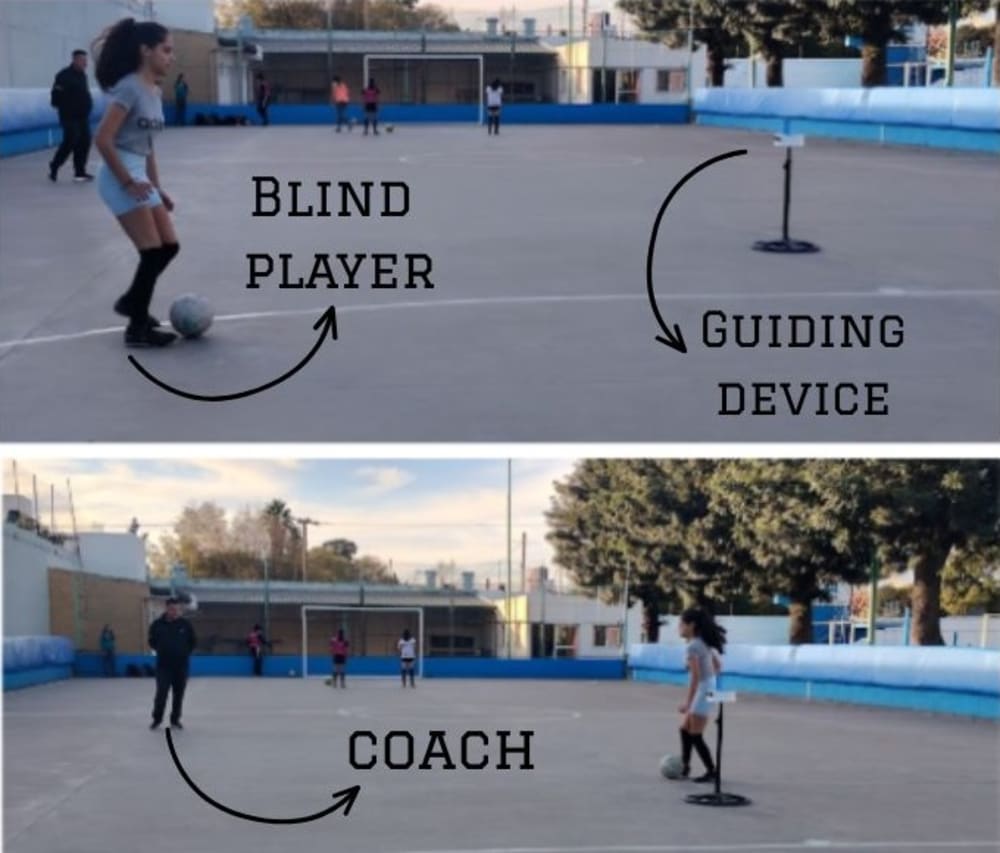This project proposes the development of a portable acoustic signaling device for sports training, specifically designed for football players with visual impairments. Its primary goal is to provide an accessible, adaptable, and low-cost tool that enhances spatial orientation during training sessions, promoting athlete autonomy and reducing the operational workload of coaches.
The device detects the proximity of players using an ultrasonic sensor and emits sound cues that vary either in a preset manner or according to user-selected settings, depending on the chosen operating mode. It includes two modes: an automatic mode, which modulates sound cadence based on the athlete’s distance; and a manual mode, which continuously plays a sound and emits a verification tone when a player crosses the detection area. The structure is 3D printed using PLA and houses electronic components such as an ESP32 microcontroller, an ultrasonic sensor, a DFPlayer Mini module, an audio amplifier, a rechargeable lithium battery power system, and a pair of 3-watt speakers, ensuring sufficient audibility in outdoor environments.
The prototype has been tested in real outdoor training sessions with visually impaired athletes and their coaches, who provided feedback on the device's usability, sound clarity, and positioning. Based on their input, sound types were optimized, and the range and structure were refined to better match training conditions.
This design stands out for its innovative approach: although there are sound beacons and noise-producing balls used in blind football, there is currently no autonomous, portable, and configurable system like this on the market. It enables the dynamic delimitation of training zones and provides real-time auditory feedback without direct intervention from coaches. Its implementation represents a significant advancement over the current state of the art by transforming ordinary areas of the field into interactive adapted training spaces.
In terms of feasibility, the solution is affordable, costing less than USD 40 per unit, and built from widely available commercial components. Its modular programming design allows for future improvements and expanded functionality. Assembly requires only basic knowledge of electronics and 3D design.
Regarding marketability and application, the device addresses real needs identified in field trials conducted with the Argentine national women’s blind football team. It is ideal for use in sports clubs, inclusive training programs, rehabilitation centers, and Paralympic federations. Moreover, it can be adapted for other disciplines or educational contexts that require acoustic marking of safe or reference zones.
Future developments include remote configuration via mobile app, additional training modes, and adaptations for use in other sports or rehabilitation exercises. The system's modular architecture also supports sensor upgrades to increase accuracy and durability.
With a battery life of up to six hours of continuous use and positive validation through real-user testing, this project offers a functional, inclusive, and socially impactful tool with virtually no direct competitors in the current market.
Promoting access to sports for people with visual impairments is not only a matter of equity, it is a key step toward full inclusion, autonomy, and well-being.
Video
Like this entry?
-
About the Entrant
- Name:Agustin Perez
- Type of entry:teamTeam members:
- Agustina Zavala
- Software used for this entry:https://a360.co/45EsB6A - Fusion360
- Patent status:none









